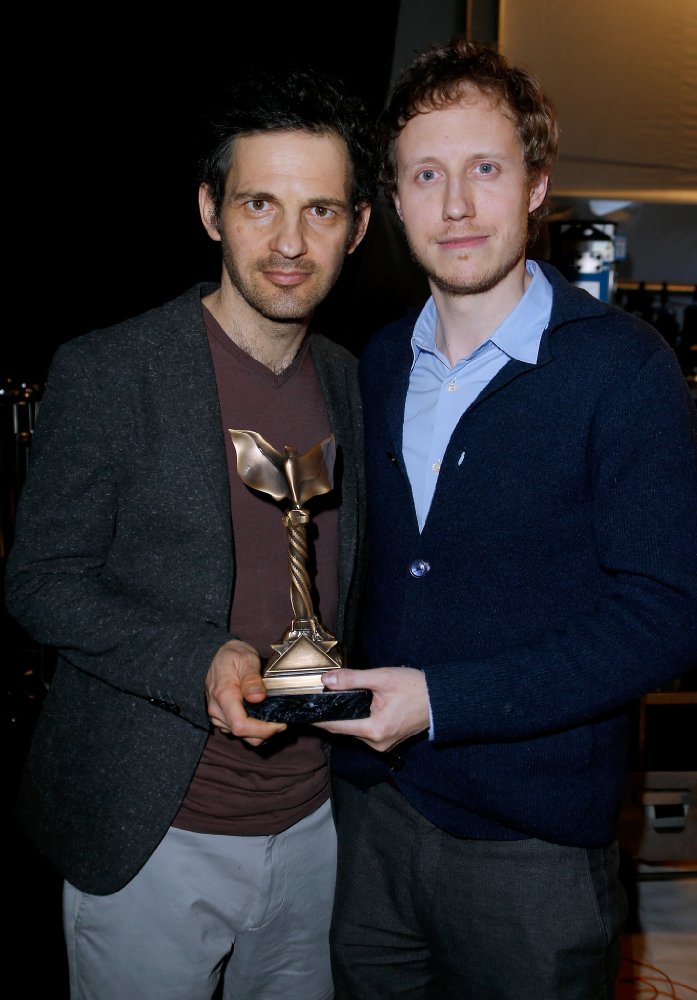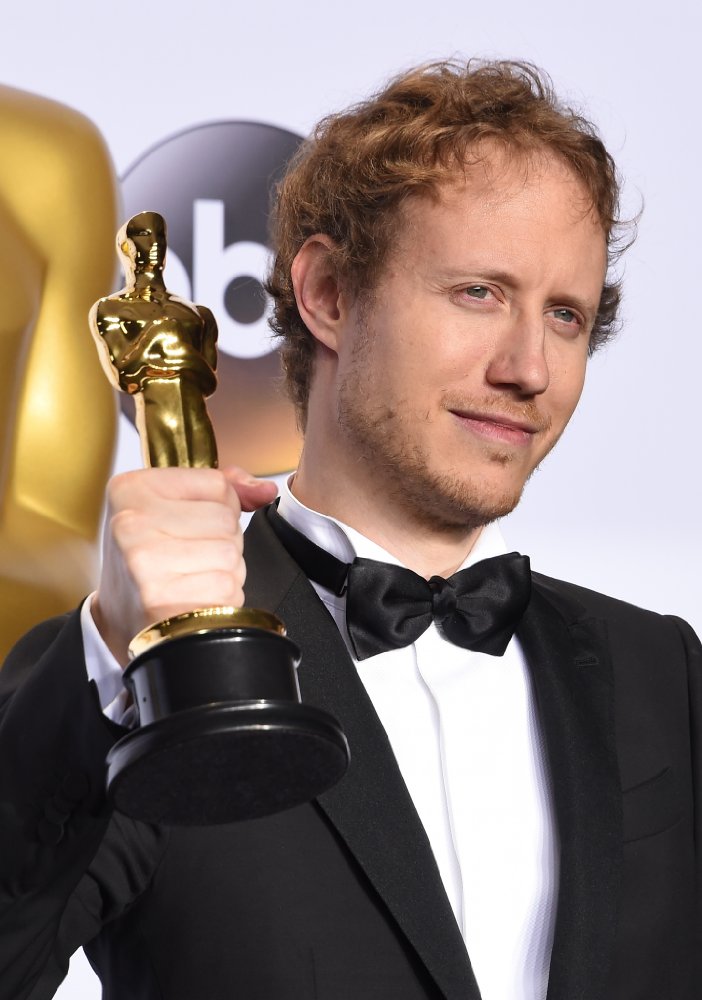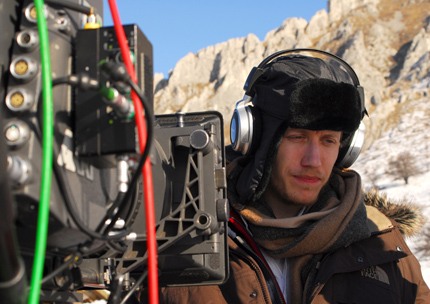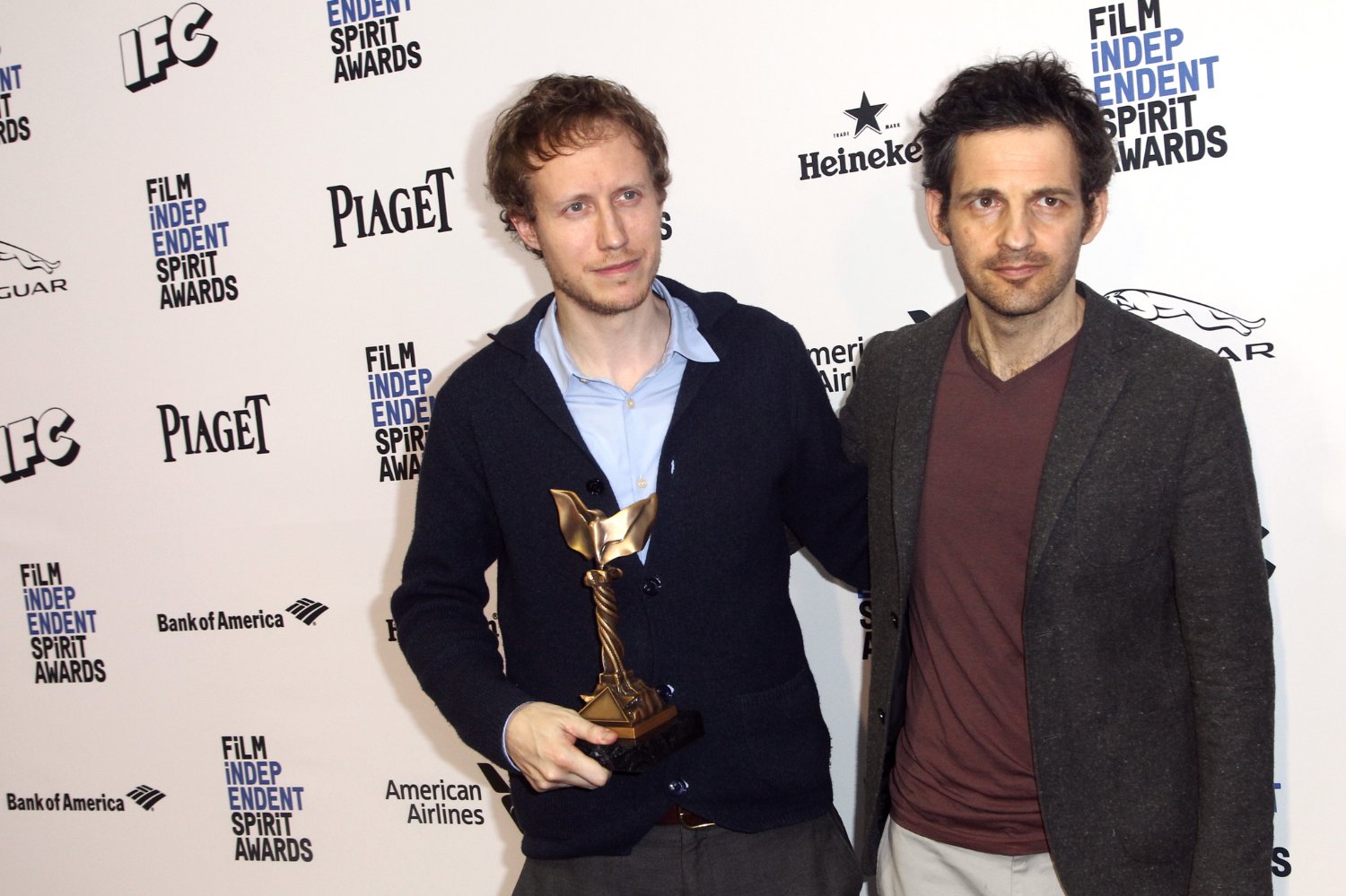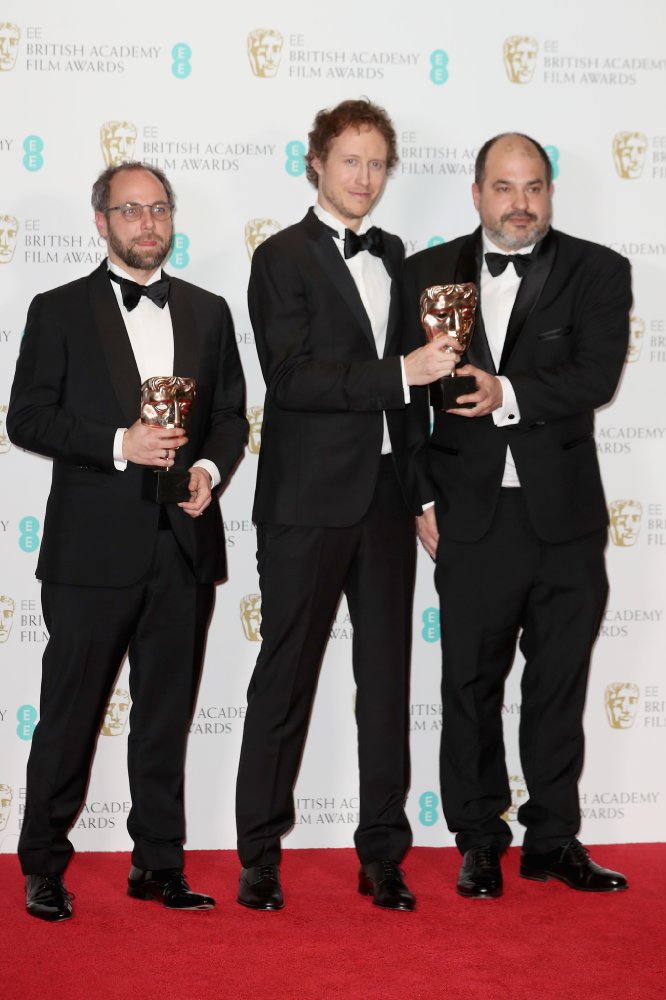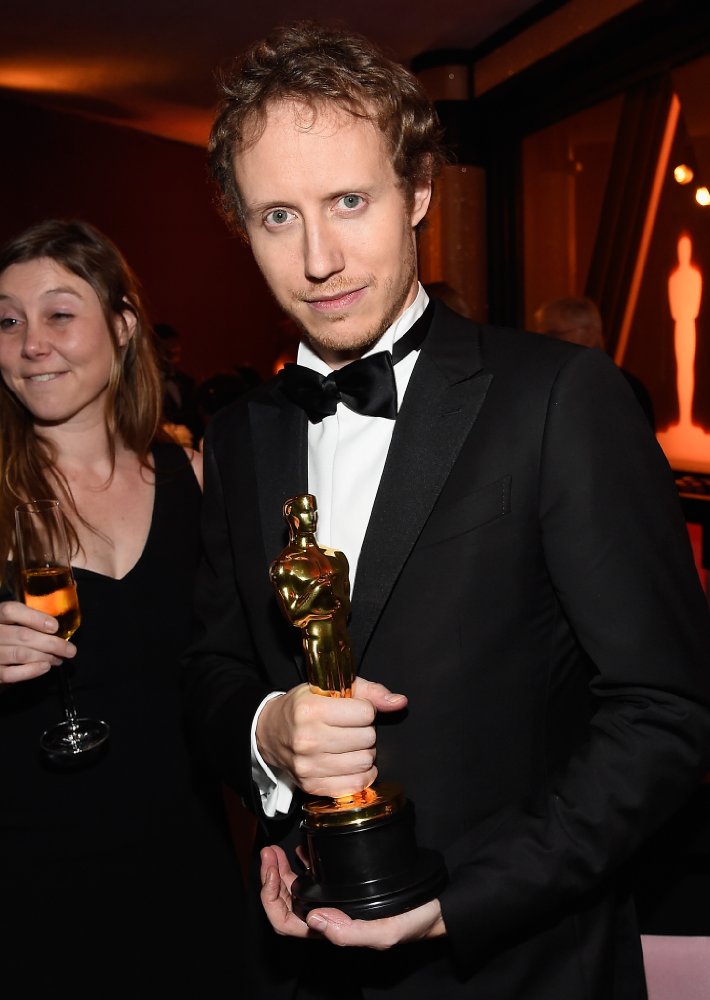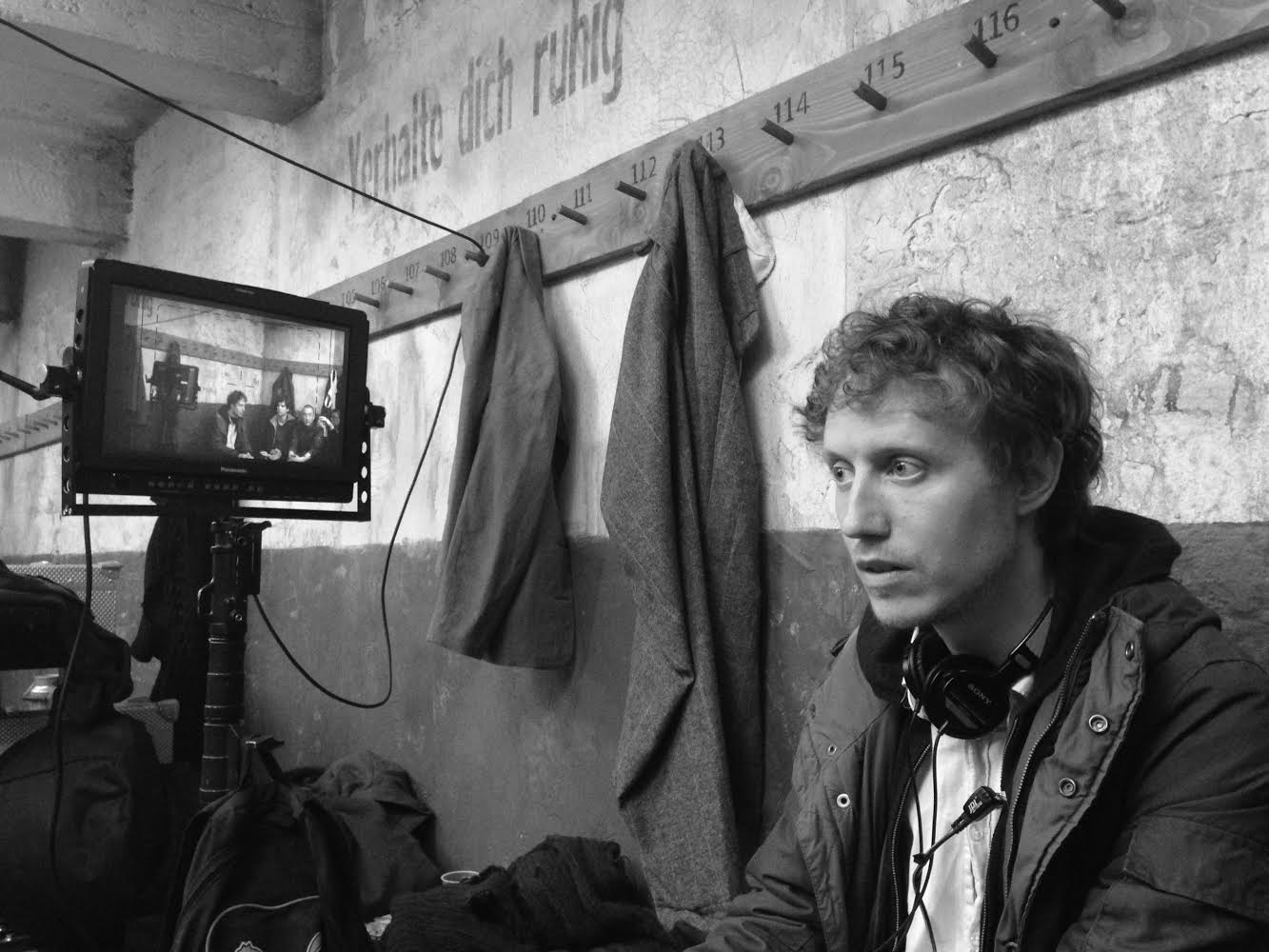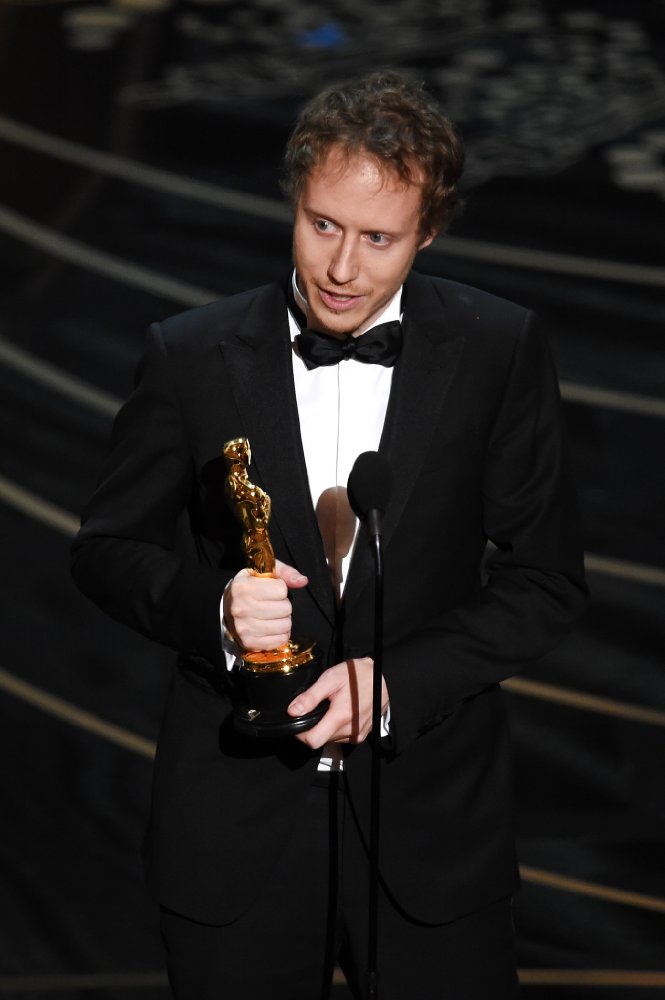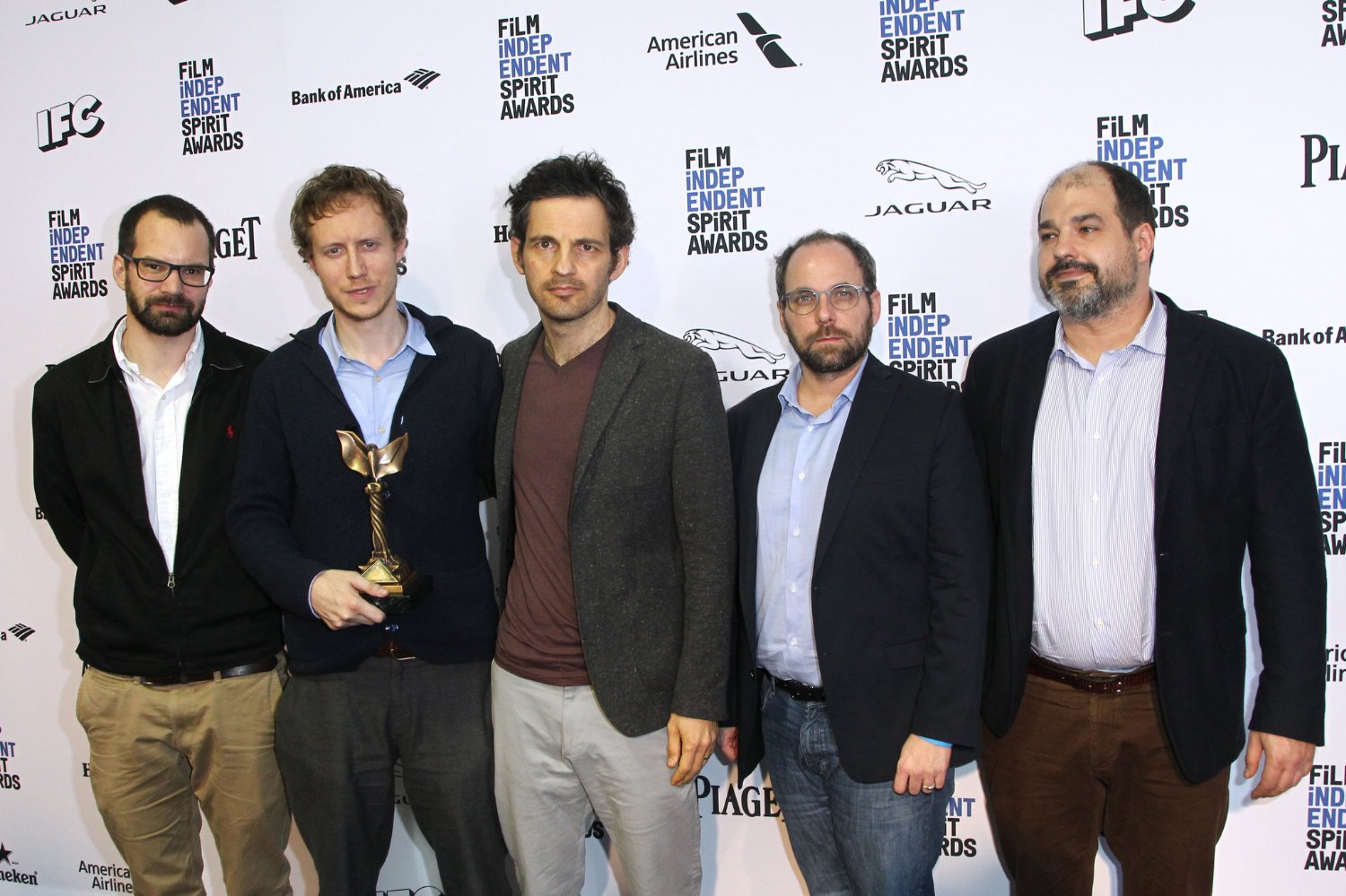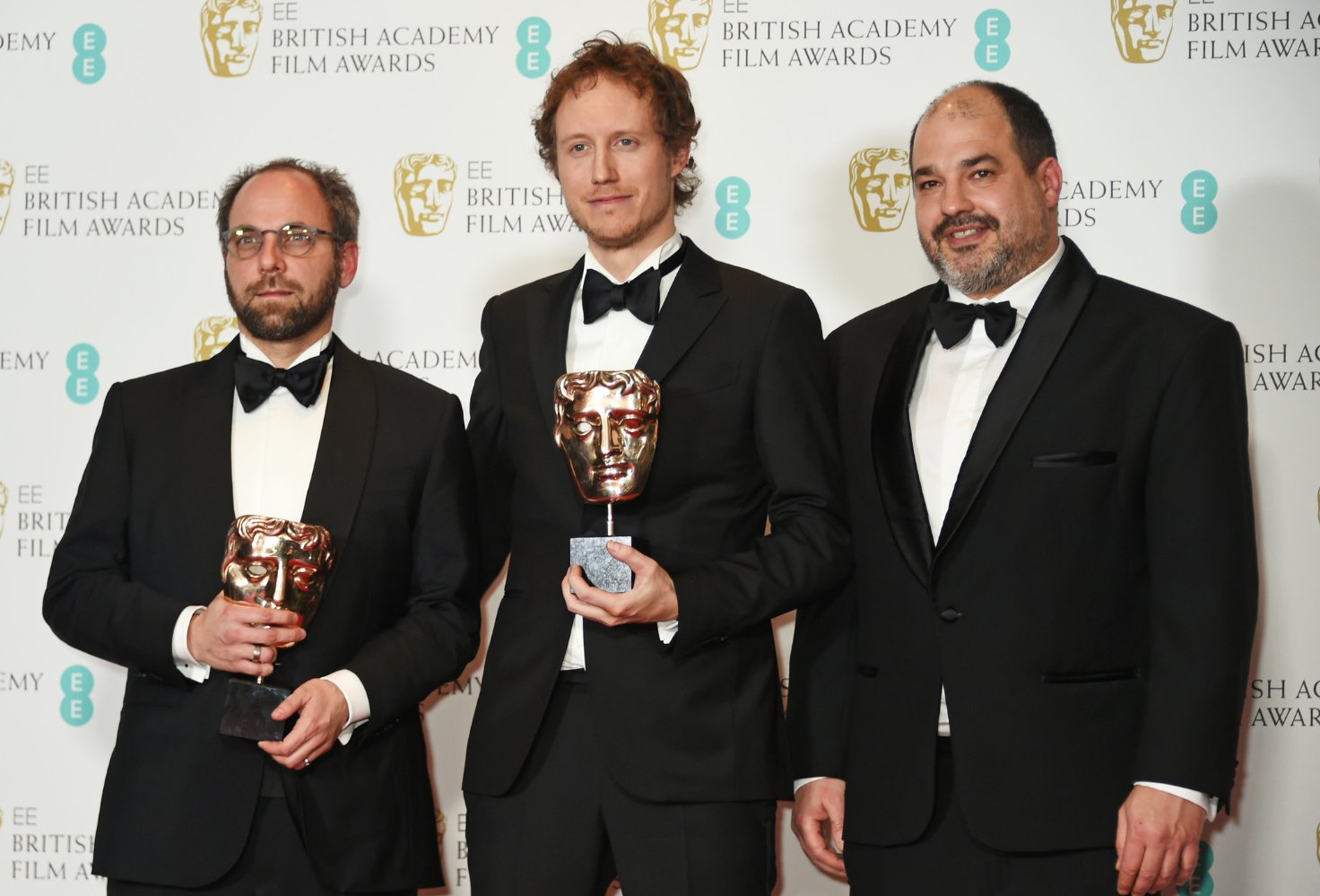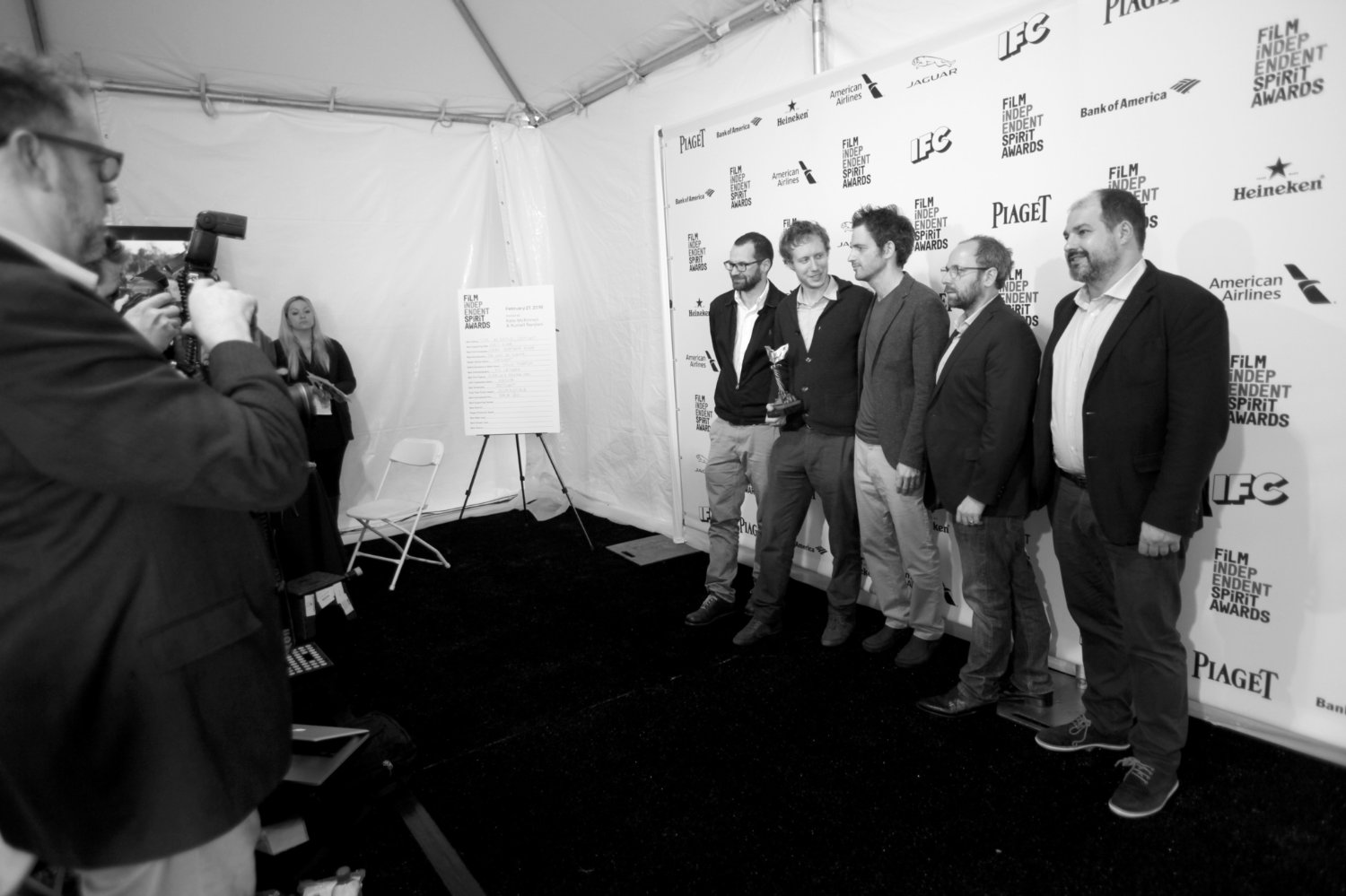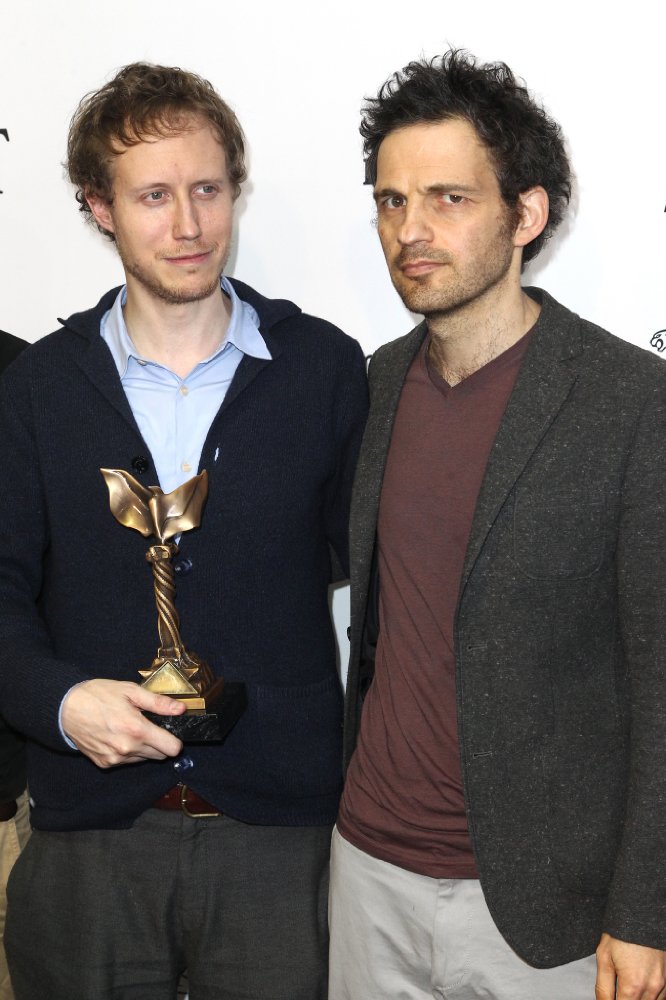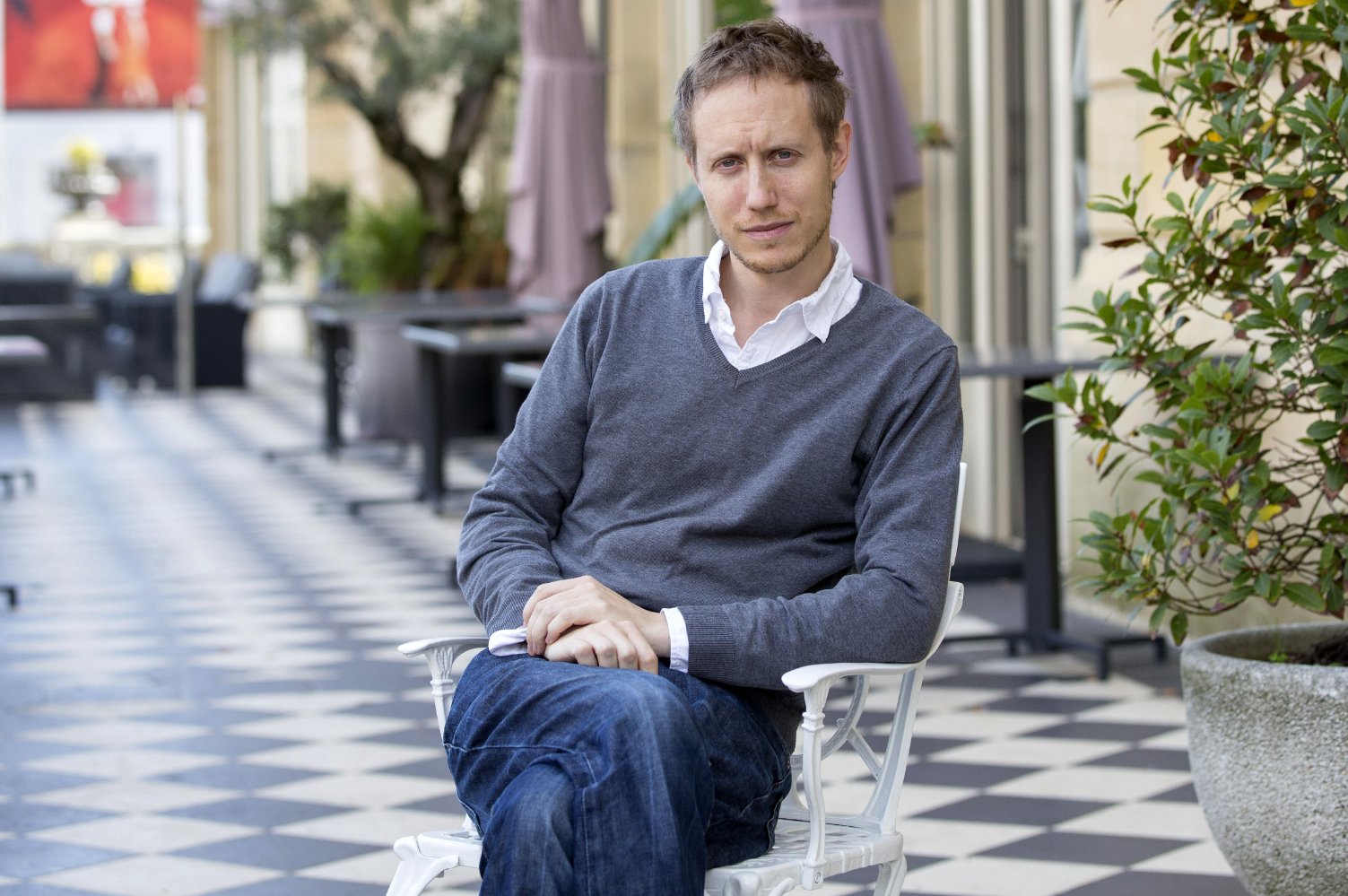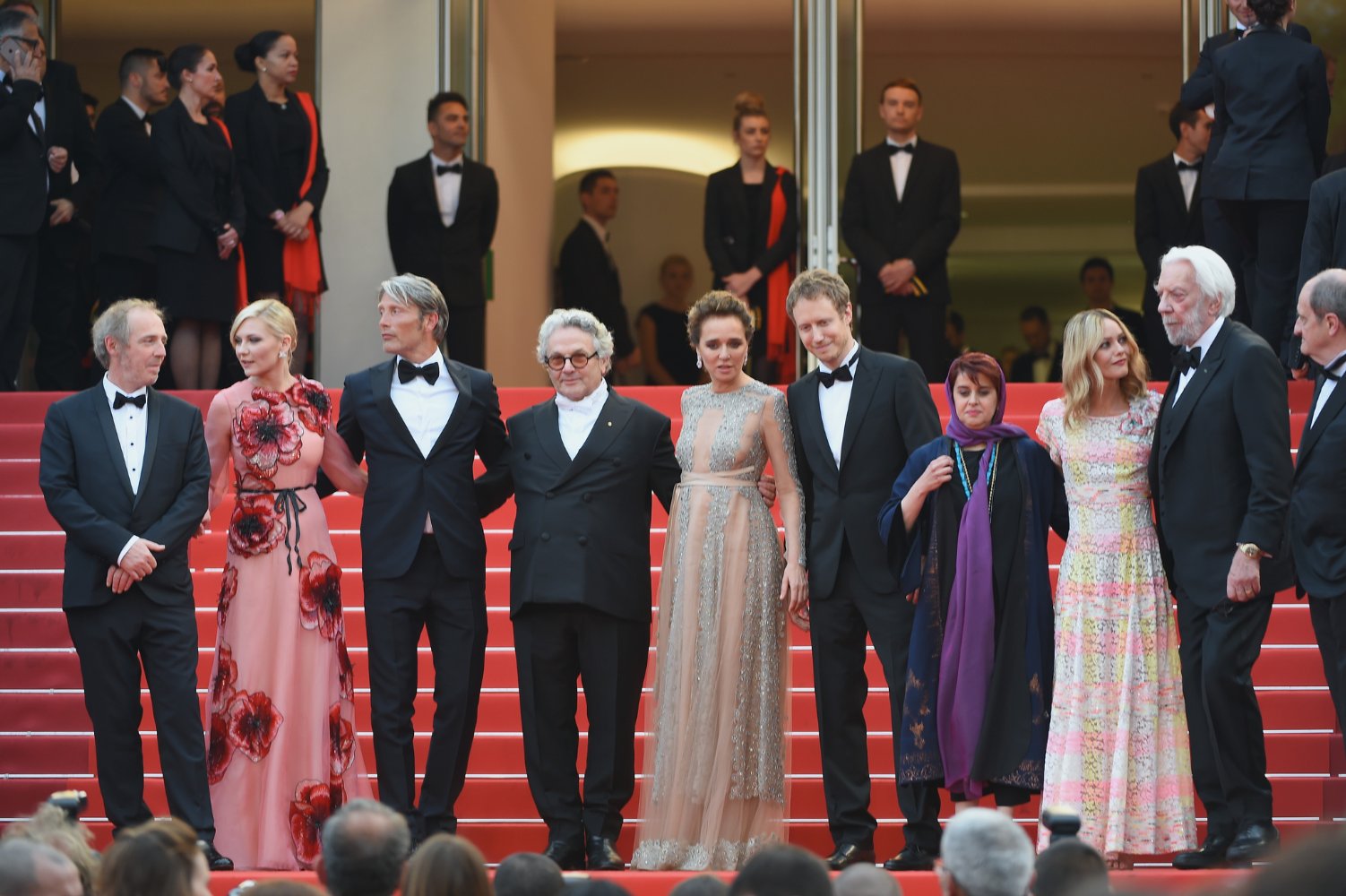
László Nemes
Birthday: 18 February 1977, Budapest, Hungary
László Nemes was born on 18th Feb. 1977 in Budapest, Hungary. He moved to France at 12 with his mother. He grew up in Paris, where he studied History, International Relations and Political Science a ...Show More
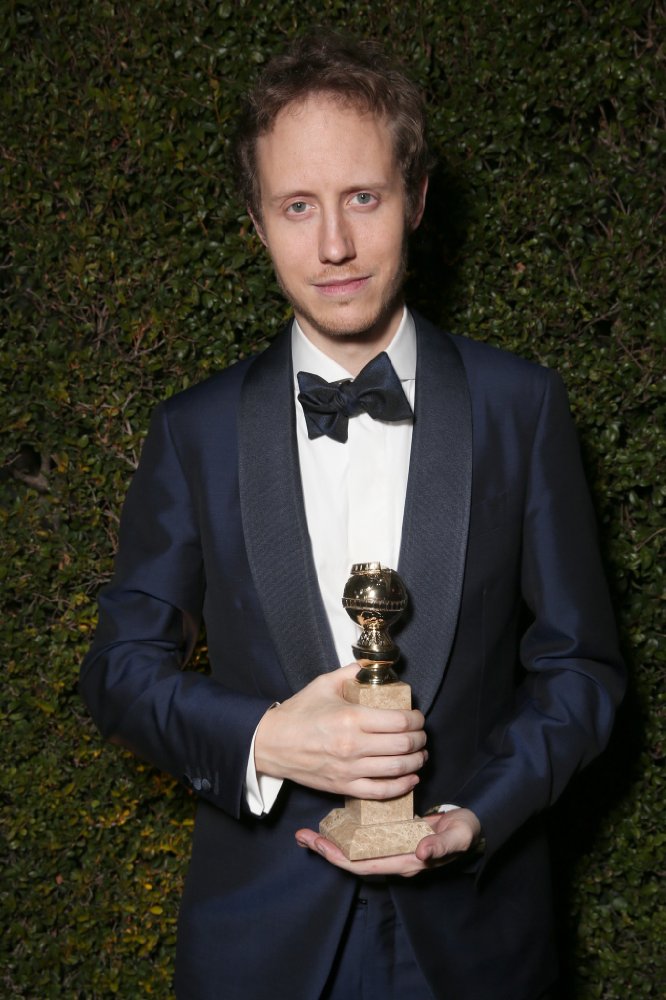
[on Saul fia (2015)]...it is an immersive experience and it offers an angle that hasn't been seen - Show more
[on Saul fia (2015)]...it is an immersive experience and it offers an angle that hasn't been seen - not offering a post-war, frozen, static point of view with the distance and safety of the viewer. I wanted the viewer to be within the experience. That is something that makes it unique. [2015] Hide
[on Saul fia (2015)] What I did was try to recreate the experience of one human being with the limit Show more
[on Saul fia (2015)] What I did was try to recreate the experience of one human being with the limitations of one human being within the concentration camp. I think being with the Sonderkommando throughout the film gives a measure of the limitations and the despair that these people must have experienced. [2016] Hide
[on Saul fia (2015)] The thing about survival is that survivors, in a sense, felt bad for having sur Show more
[on Saul fia (2015)] The thing about survival is that survivors, in a sense, felt bad for having survived, because of the things they had to do in order to stay alive. The moral issue is with those who constructed the camps, not with those who were transported there and had to do terrible things to survive. [2015] Hide
It comes down to the question of supporting ambitious projects and supporting voices that are differ Show more
It comes down to the question of supporting ambitious projects and supporting voices that are different in film. Films look more and more the same. Projects that are more daring are pushed to the margin and cannot be made, or are very difficult to make. The sense of risk that should be inherent to film-making is counterbalanced by fear. The European film financing system is made in a way in which there is a tremendous resistance to taking risks. [2015] Hide
[on Saul fia (2015)] I watched Shoah (1985) so much in pre-production with my cinematographer and co Show more
[on Saul fia (2015)] I watched Shoah (1985) so much in pre-production with my cinematographer and co-writer. It was such an interesting inspiration. "Shoah" is about, in a way, a very important off-screen space of the destroyed European-Jewish world. And we had a very important rule for the off-screen of "Saul". We're in the same tradition, I guess. You have to be responsible. You have to carry the responsibility when you talk about the Holocaust. You have to talk about it, but you cannot take the Holocaust in a fiction film for its dramatic value. If you talk about it, you have to interrogate the very essence of the Holocaust. I wanted to make this film so that filmmakers after me will not consider it a taboo, but also will not try to just use the Holocaust, but rather really interrogate its nature. [2015] Hide
[on his biography] I studied International Relations and Political Science in Paris where I grew up. Show more
[on his biography] I studied International Relations and Political Science in Paris where I grew up. I wanted to go to film school but couldn't. I took some classes in film theory at university and I learnt by myself, I read a lot and watched films. Then I went back to Hungary and worked as an assistant director. Then I went to film school in New York [NYU's Tisch School of the Arts] but I quit before finishing. [DK: Why?] I did not like it. [DK: Too conventional?] Yes, it's a long story but film school was not my cup of tea. Then I'd already started making short films and continued doing that and developing them into features. [DK: How many short films have you made?] Three. Interestingly, none of them were accepted in the shorts competition in Sarajevo. [Interview with Dana Knight at Sarajevo Film Festival 2015] Hide
[on Saul fia (2015)] I think people never had a direct, visceral understanding of what it might have Show more
[on Saul fia (2015)] I think people never had a direct, visceral understanding of what it might have been like to be inside a concentration camp, to be caught in the middle of an extermination machine. There have been attempts to approach it in a more intellectual manner, but not viscerally - to put you in the shoes of someone in that situation. It's something that cinema can achieve, this kind of direct, intuitive relationship between the individual audience members and the character. We lack empathy in the sense that there's a distance when we think about the camps in abstract terms. So I hope this movie can help make people really feel what it's like to be oppressed and destroyed in our human experience. Also, if we consider Holocaust as a myth and not as something that took place in this world - I mean, Auschwitz was a factory, built by people and not by martians - if, as a civilization, we don't address the genocidal tendency in our nature, how can we prevent such atrocities from happening again? So - maybe I'm being optimistic here - I think that's something that cinema can do, to speak to the human in the audience. [2015] Hide
[on the use of shallow focus in Saul fia (2015)] Yes, it's a portrait, it's a very reduced scope of Show more
[on the use of shallow focus in Saul fia (2015)] Yes, it's a portrait, it's a very reduced scope of an image and it actually corresponds to the limitations of a human being: you see very little, you know very little in a concentration camp. And the human experience, with hindsight, is different but the people who were there knew much less. I wanted to convey how limited we could be in this kind of situation. [DK: That's also how we experience life in reality, the background is always a bit blurred.] Exactly. And that's the other thing: we wanted to have something very human as an experience. So these limitations don't apply solely to the concentration camp. I think cinema nowadays goes too far in showing. We were against that, we tried to find ways that were more at the human level. [Interview with Dana Knight 2015] Hide
[on Saul fia (2015)] I wanted to make this film, yes, because I had a family that was wiped out with Show more
[on Saul fia (2015)] I wanted to make this film, yes, because I had a family that was wiped out with no trace. So, I guess, it was a way to leave a trace. [2015] Hide
[on Saul fia (2015)] The individual doesn't have access to a flow of information [in a concentration Show more
[on Saul fia (2015)] The individual doesn't have access to a flow of information [in a concentration camp]. Unlike Holocaust films or period dramas, we are very much in a world of limitations and in a world of lack of knowledge, of frenzy and that had to be included. For us, to immerse the viewer, we wanted to create these long shots that made time and space organic, and to be shared with the main character. We actually had the cast and crew immersed in this world. Everyone had the feeling that this was happening. [2015] Hide
[on Saul fia (2015)] We didn't look for a hero. We wanted a marginal figure, someone more low key an Show more
[on Saul fia (2015)] We didn't look for a hero. We wanted a marginal figure, someone more low key and normal, because previous films about the Holocaust all dealt with abnormal, exceptional characters who wanted to survive. However, the camps were not about survival; they were about death and to survive was an exception. What we looked for was inner survival and this is linked to the story of the boy. This quest does not make sense to anybody but him, though we hope it does to the viewer. For this reason, I focused on the Sonderkommando. What I liked about that group was that it was very real, concrete, and tangible; it explains and describes things in a normal way, it explains how a death factory functions with its organization, rules, shifts, and hazards. [2015] Hide
[on casting Saul fia (2015) with casting director Éva Zabezsinszkij] We went through a lengthy e-ca Show more
[on casting Saul fia (2015) with casting director Éva Zabezsinszkij] We went through a lengthy e-casting process, people sending us videos. We wanted people from several backgrounds, several countries, a lot of languages. So we had people from Poland, Germany, Israel, Romania and, of course, Hungary. [2015] Hide
[on Saul fia (2015)] In Europe and the US it seems that films have to have a message that is clearly Show more
[on Saul fia (2015)] In Europe and the US it seems that films have to have a message that is clearly understood, it's like we're in an era of public education, not filmmaking. I think that filmmaking is something that has to rely on the viewer and their imagination. It has to have its zone of darkness and unknown, otherwise it's all planned out and we're on some safe road. [2015] Hide
[on Béla Tarr and long takes] He was my film school. (...) It's a long Hungarian tradition. Tarr co Show more
[on Béla Tarr and long takes] He was my film school. (...) It's a long Hungarian tradition. Tarr comes from [acclaimed Hungarian-Romanian film director] Miklós Jancsó. We're from that school of long takes. [2015] Hide
[on the re-creation of a crematorium in Saul fia (2015)] It was not a studio; it was a real place. ( Show more
[on the re-creation of a crematorium in Saul fia (2015)] It was not a studio; it was a real place. (...) In a sense, you were there as a witness: You had a feeling you were in a crematorium, rather than on a movie set. For that reason, cast and crew believed they were in a real situation. The fact that we used longer shots also contributed to the organic feeling within the shoot itself. Everyone could relate to it in a much more visceral sense - we were immersed in this world. It made it more difficult in a psychological way, but it made our work much more concentrated, with a sense of mission. [2015] Hide
[on Saul fia (2015) and the main character's name] Auschwitz and the camps were about dehumanisation Show more
[on Saul fia (2015) and the main character's name] Auschwitz and the camps were about dehumanisation of the individual. In a way sticking to one person, gives back to the individual the human dimension that has been lost. So in a way we go against the logic of the camp even if we try to recreate the logic of the camp. There's an internal conflict in it. And the fact that he was named Ausländer - it was an intuitive choice. We were looking for a name that came from this region, the place from which my family came. And I like the fact that he is in a certain way a foreigner or a stranger. I think a lot of Jews were in a way. [2015] Hide
[on Claude Lanzmann] Yes, he likes it [Saul fia (2015)] a lot. We became friends through the film. A Show more
[on Claude Lanzmann] Yes, he likes it [Saul fia (2015)] a lot. We became friends through the film. And I know he is very hard with fiction films. (...) We watched Shoah (1985) a lot before making this film. It inspired us. I think "Shoah" has a tremendous outer frame off stage. It's the vanished world of the Jews of Europe. The idea of an off-screen that is always there that fueled our approach. [2015] Hide
I'm interested in evil. A sort of evil that cannot be understood at a glance or represented. Exactly Show more
I'm interested in evil. A sort of evil that cannot be understood at a glance or represented. Exactly the contrary of our representation of evil in a modern world, especially in cinema. [2016] Hide
[on Saul fia (2015)] In a sense, you were there as a witness: You had a feeling you were in a cremat Show more
[on Saul fia (2015)] In a sense, you were there as a witness: You had a feeling you were in a crematorium, rather than on a movie set. For that reason, cast and crew believed they were in a real situation. The fact that we used longer shots also contributed to the organic feeling within the shoot itself. Everyone could relate to it in a much more visceral sense - we were immersed in this world. It made it more difficult in a psychological way, but it made our work much more concentrated, with a sense of mission. [2015] Hide
[on Saul fia (2015)] Once you have a clear-cut visual strategy, and in this case it was that we want Show more
[on Saul fia (2015)] Once you have a clear-cut visual strategy, and in this case it was that we wanted to accompany he main character, then everything has to follow in a very coherent way. It gives you guidance. In this case, we knew we had establish a code of conduct on what to do and what not to do. We didn't go beyond the capacity of one human being visually. We wanted to stick to one character, one individual. If he is pushed down to the ground, we go down with him to the ground, if he goes to the water, we go to the water with him. We wanted to use one lens, the closest to the human perception. We had to have longer shots and we had to have beats within the scene and not edit for beats. It's more like internal editing that takes place within the frame. [2015] Hide
[on Saul fia (2015)] We were deciding between widescreen and the narrow academy aspect ratio [1.37:1 Show more
[on Saul fia (2015)] We were deciding between widescreen and the narrow academy aspect ratio [1.37:1]. In the end we found that widescreen - although it would have looked very nice - would have been too... cinematic, it would have made a spectacle out of the background, made the background so stylistically important that we would lose the portrait-like focus we wanted for the film. [2015] Hide
[on Saul fia (2015)] We wanted to maintain logic at all costs: logic of space, logic of work, the wo Show more
[on Saul fia (2015)] We wanted to maintain logic at all costs: logic of space, logic of work, the work processes, the hierarchy. So everything that could be preserved in its logic was very important. So I think you can feel this logic in the way the work was organized. Those are the rules of the game. We had testimonies from the survivors of the Holocaust. We read those in several books. There was one direct source, which was the "Scrolls of Auschwitz," the written diaries by the members of the Sonderkommando, that they buried before they revolted in 1944. So a lot of elements were given to us by these testimonies and then we consulted with historians. We had the constant supervision of a Hungarian historian specializing in the Holocaust, from checking the places where the numbers were to constructing the sets, how the paint would look, where the lighting would be, what were the bulbs and those kind of things. We had a Yiddish adviser who helped us with this vernacular, with a special vocabulary recreated that had been lost. It gave us these many levels of realism, although the normal viewer cannot comprehend all these things. But we wanted to keep the authenticity as much as possible and make it believable.[2015] Hide
Béla Tarr for me was my school. He taught me the essential things to become a filmmaker but there i Show more
Béla Tarr for me was my school. He taught me the essential things to become a filmmaker but there is no other relationship. He was nervous when I talked to him so I haven't talked to Bela in eight years. While it was very important to work with him, it's part of history now. [2015] Hide
[on Saul fia (2015)] There was no way we would make this film in a classical way. I don't believe in Show more
[on Saul fia (2015)] There was no way we would make this film in a classical way. I don't believe in coverage. I believe in the directorial point of view and directorial choices. The story has to be told in a certain fashion. You don't direct on the editing table. More, in this project, we knew that it needed...it's included in the script-the way we film it was infused in the text. We knew it. We wanted to make this portrait of one individual to narrow the field of vision because we wanted to rely on the audience. [2015] Hide
[on Saul fia (2015)] I think also, when you are in Auschwitz, there is no sign that you are in Ausch Show more
[on Saul fia (2015)] I think also, when you are in Auschwitz, there is no sign that you are in Auschwitz. You have to forget everything that was given to you by the films on the Holocaust. It has to be forgotten at some point because all those films rely to an extent on an external point of view. I really wanted to immerse the viewer in an experience that's not explained. It had to be visceral because that's the way it happened. [2015] Hide
[on production designer László Rajk] For him, our collaboration was to determine how to re-create Show more
[on production designer László Rajk] For him, our collaboration was to determine how to re-create specific buildings within the concentration camp. We couldn't re-create the crematorium inch by inch. Our challenge was to create the logic of a crematorium, the spaces, how the rooms were interconnected in their logic, rather that re-create it exactly - how to give it an organic believability. [2015] Hide
A part of my family was assassinated in Auschwitz. It was something we talked about every day. When Show more
A part of my family was assassinated in Auschwitz. It was something we talked about every day. When I was little, I had the impression that "evil had been done." I imagined it like a black hole burrowed within us; something had broken, and my inability to grasp exactly what it was kept me isolated. I didn't understand for many years. Then, the time came for me to reconnect with that specific part of my family's history. [2015] Hide
[on Saul fia (2015)] It can work on a perception level and really communicate with the senses and no Show more
[on Saul fia (2015)] It can work on a perception level and really communicate with the senses and not necessarily with the intellectual part of the psyche. It can offer much more than something for the intellect and that, I think, is the advantage of cinema. Hide
[on Saul fia (2015)] When you make your first feature you don't really understand the dangers, you'r Show more
[on Saul fia (2015)] When you make your first feature you don't really understand the dangers, you're not aware of the dangers. You need to be unconscious of the dangers of failing with the film and in your career. I was very anxious when I made the film, but I knew it was also a prototype, it's the kind of film we have to invent as we go. We wanted to make it that way though, we knew it would be a difficult and ambitious project, and it was constantly frustrating because I had a sense when I was filming it, that I wasn't succeeding in getting what I wanted. I guess this frustration is part of the game, I hope in the future I can be as bold. I wish I could be on the edge once more. [2015] Hide
When I was working for Béla Tarr, I learned about his extreme attention to detail - controlling the Show more
When I was working for Béla Tarr, I learned about his extreme attention to detail - controlling the creative process to the point of involving a team to do that, and also having the technical crew as much as a creative crew. He knows who his focus should be on.[2015] Hide
[on the editing of Saul fia (2015)] Matthieu [editor Matthieu Taponier] and I had extensive discussi Show more
[on the editing of Saul fia (2015)] Matthieu [editor Matthieu Taponier] and I had extensive discussions on how to go from one immersive situation to another. (...) We cut according the gaze of the main character, like when he starts looking around to find a way to realize his quest to bury the boy. [2015] Hide
[on Saul fia (2015)'s similarities with Sophocles's classic tragedy "Antigone" (written in 441 BC)] Show more
[on Saul fia (2015)'s similarities with Sophocles's classic tragedy "Antigone" (written in 441 BC)] My co-writer [Clara Royer] and I never once thought of the story of Antigone but it's absolutely right. [2015] Hide
[on Saul fia (2015)] Even if it was ambitious, I felt the scope of it was something I could control. Show more
[on Saul fia (2015)] Even if it was ambitious, I felt the scope of it was something I could control. I wanted to immerse the viewer in an experience rather than construct an intellectual discourse or use the Holocaust for its dramatic value. [2015] Hide
I was an assistant director for years. I was an assistant to Béla Tarr in Hungary for two years, wh Show more
I was an assistant director for years. I was an assistant to Béla Tarr in Hungary for two years, which taught me the basics of not just filmmaking, but high-level filmmaking - in terms of how to choreograph a scene, how to stage complicated shots, how to work with a professional crew etc. Also I had made three short films before this. And I had built a relationship to some key creative crew members over the years: the DP, the production designer, the sound designer. On such a foundation I can communicate with them effectively. It's like we've been doing rehearsals all this time. [2015] Hide
[on Saul fia (2015) and filmmaking] ...if you don't take risks, you shouldn't make cinema. I mean, t Show more
[on Saul fia (2015) and filmmaking] ...if you don't take risks, you shouldn't make cinema. I mean, that's part of art. If there's no risk, then there's no interest also. It's good, because it's thrilling. Not the film, but the experience is thrilling as a maker, because it's something new. [2015] Hide
The interesting thing in Judaism if I understood it correctly, because I wasn't brought up in a reli Show more
The interesting thing in Judaism if I understood it correctly, because I wasn't brought up in a religious fashion, is the constant obligation to ask questions. You cannot just take a rule as it is and take it as a dogma, there is a continuous obligation to wonder if it's right or wrong. Saul fia (2015) is not religious but it's not about a God it's about something very human and universal - finding a voice within that would give you a way to remain a human being in this darkness. [2015] Hide
[on Saul fia (2015)'s visual style] It's something that I really came to design over the course of a Show more
[on Saul fia (2015)'s visual style] It's something that I really came to design over the course of a few years while working with my cinematographer on my short films and through conversations that I had with him. It took me years to design it, even though the core idea was there with my first short film [Türelem (2007)]. But we were ready to make [a] portrait of very important times through this portrait of one individual. When [you have] to go into details, an overall strategy has to be adapted to every situation in a given film. So it was a long process and I needed time. [2015] Hide
[on Saul fia (2015)] We wanted to convey something about the human experience within the concentrati Show more
[on Saul fia (2015)] We wanted to convey something about the human experience within the concentration camp, within the extermination process and that was our strategy. We achieved it through the mixture of chaos and organization. These two elements of chaos and organization are in the film, are in our strategy of directing and making it happen but also are at the heart of the human experience within the concentration camp. [2015] Hide
For me, the magic of cinema is inseparable from film, the celluloid, the chemical medium, the uncert Show more
For me, the magic of cinema is inseparable from film, the celluloid, the chemical medium, the uncertainty of the image, the grain structure making it move from one image to the next...[2015] Hide
[on favorite filmmakers] In general, Stanley Kubrick is the one that I'm the most interested in. (.. Show more
[on favorite filmmakers] In general, Stanley Kubrick is the one that I'm the most interested in. (...) His approach. You can feel his approach and the symptom as a reference point. I really like Barry Lyndon (1975) or The Shining (1980). The thoughtfulness and the directing strategy. [2015] Hide
[on Saul fia (2015) and Béla Tarr] There's no relationship there at all. People can't accept that I Show more
[on Saul fia (2015) and Béla Tarr] There's no relationship there at all. People can't accept that I just fell from the sky. [Laughs] I really fell from the sky! Bela was sort of my initiation into the trade. He was my introduction into directing and taught me how to approach a scene in certain ways. But, unlike Bela, who makes beautiful films, we knew we couldn't make a beautiful film. That was rule number one: We couldn't have traditional aesthetics. I haven't talked to Bela in eight years. [Cannes, May 2008] Hide
[on Saul fia (2015)] In a way, the people tend to approach history in a very frozen manner and I wan Show more
[on Saul fia (2015)] In a way, the people tend to approach history in a very frozen manner and I wanted to offer an internal point of view to something that seems to be so well-known. History experienced from the inside doesn't look like a postcard. It looks like reality. [2015] Hide
[on Saul fia (2015)] Idi i smotri (1985) by Elem Klimov was a great source of inspiration for me. Th Show more
[on Saul fia (2015)] Idi i smotri (1985) by Elem Klimov was a great source of inspiration for me. The movie follows a boy in 1943 on the eastern front and stays with him in an organic manner through his hellish adventures. But Klimov allowed himself far more baroque things than we did.[2015] Hide
I don't think any subject matter is off the table when it comes to art. I think it can be done. I ho Show more
I don't think any subject matter is off the table when it comes to art. I think it can be done. I hope it was done by us.[2015] Hide
[on Saul fia (2015)] I'm not a religious person but I have a very deep connection to Judaism and I s Show more
[on Saul fia (2015)] I'm not a religious person but I have a very deep connection to Judaism and I see how much destruction the European Jews have suffered. And I made this film to talk about this lost civilization and this lost world, and also because I'm angry that this happened, and Europe never really understood that. [2015] Hide
[on the scene in Saul fia (2015) where Saul meets members of the resistance who photograph the exter Show more
[on the scene in Saul fia (2015) where Saul meets members of the resistance who photograph the extermination process] Something that was strictly forbidden by the SS, of course [was taking pictures]. In Birkenau, the Polish resistance was able to get one or a few cameras to the Sonderkommando in order to document the extermination. At unbelievably great risk, they were able to take a photograph just before the doors to a gas chamber were closed and then immediately afterwards. Naked women approaching the shot; then their piled-up corpses, which were taken outside and burned right there on the ground. [happened in August 1944] (...) These four photographs deeply affected me. They attest to the extermination, they constitute evidence, and ask essential questions. What should be done with an image? What can it represent? What viewpoint should we have when faced with death and barbarity? We integrated this moment into the heart of the film, as it corresponds to a segment of Saul's journey through the camp when suddenly, just for a moment, he participates in the construction of our view of the extermination. And also, because of the representation of the image within itself, we are, at that point and only then, questioning the very status of representation. [2015] Hide
[on foreground and background in Saul fia (2015)] We planed everything in advance very meticulously Show more
[on foreground and background in Saul fia (2015)] We planed everything in advance very meticulously in terms of the foreground and the background. I had a director, a friend, who was hired to direct the background action. In a sense, everybody was being instructed by a director on the set, which was important, I think. We knew that Saul was part of the work process. He was part of the machinery. He was part of a factory. We needed to establish the context very strongly. We needed the context to work in a very effective and believable way. In order for that to happen, we usually put the background action in place on set, and then we added the main action, which is the reverse of the usual work method. This introduced, into the organization and the planning, a sense of chaos and frenzy. I think this is something that also has to do with the camp, which was a mixture of order and chaos. [2015] Hide
For me, cinema is also about taking risks and ambition. These are the things that we are losing beca Show more
For me, cinema is also about taking risks and ambition. These are the things that we are losing because now individual voices are being increasingly erased for a common and established approach, which resembles more and more the television transmission of events. This is the death of cinema. I'm trying to resist that by fighting for film and fighting for the magic of cinema, and that means that we shouldn't forget the viewer. [2015] Hide
[on Saul fia (2015)] What we usually define as madness in real life does not have any meaning in Aus Show more
[on Saul fia (2015)] What we usually define as madness in real life does not have any meaning in Auschwitz. That was an entirely different set of coordinates. So what is madness? What is happening within Auschwitz is supposed to be super rational. Don't you call that madness? It's absurd. The madness of Saul is the most important human quality; it is a form of revolt. (...) In fact, the movie represents different forms of resistance with the armed revolt being just one of them. Saul looked for another form of revolt and his attempt to look for his personal quest is what defines it for him. He is constantly moving between different places and behaviours, such as looking for a rabbi to give sense to his personal form of resistance. In the face of a situation in which there is no possibility of hope, Saul's inner voice commands him that he must survive, to be able to do a thing that bears meaning. [2015] Hide
[on Saul fia (2015)] There has been so much responsibility shifted back to the victims. At some poin Show more
[on Saul fia (2015)] There has been so much responsibility shifted back to the victims. At some point, from a moral standpoint, you have to separate. You don't make the victims morally responsible. [2015] Hide
[on Saul fia (2015)] I wanted to convey something of the fact that the camp was a mixture of chaos a Show more
[on Saul fia (2015)] I wanted to convey something of the fact that the camp was a mixture of chaos and organization, something that you cannot really see in movies because movies, usually they talk about how well organized the camps were. But actually the camps were chaotic. They were a mixture of languages and noise and death would be around but you, as a prisoner, you wouldn't know when you would be dead or when you would be alive. And this is something - the lack of predictability that's in the experience of the prisoner is something that has never been, you know, communicated. So I - we wanted to immerse the viewer in the experience of the main character. [2015] Hide
[on actor Géza Röhrig and the choreography of the long shots] He's someone you can't control. [Lau Show more
[on actor Géza Röhrig and the choreography of the long shots] He's someone you can't control. [Laughs] For choreography, I would say he's 70% controllable. The remaining 30% is completely out of my hands. This is a really good ratio for the Sonderkommandos with marginal movements. I'm not saying this was improvised because it wasn't, but Geza is hard to control. It was good that he played against my sense of control. The skeleton of it was very defined going into it: We knew where we would start and end. We wanted to make all the compositions for the backgrounds dynamic. So it's a mixture of choreography and letting things play out the way it's going to play out. The handheld camera gave us a lot of liberty. [2015] Hide
[on working for director Béla Tarr in 2006] I speak French and English, and I offered my services. Show more
[on working for director Béla Tarr in 2006] I speak French and English, and I offered my services. (...) As a young filmmaker you have to be humble and learn from others. (...) It became clear that the technical aspects are not important if you don't know what to say with those tools. The content is first and foremost, not the other way around. [2015] Hide
[on Saul fia (2015)] Even if Yiddish was used throughout the camp whenever it could be used, you had Show more
[on Saul fia (2015)] Even if Yiddish was used throughout the camp whenever it could be used, you had this mixture, this chaos of languages, this Babel. And we wanted to have that - we have eight languages in the film, because we wanted something that is anchored in the very heart of the film. This sense of being lost, of being unable to communicate. [2015] Hide
[on the inspiration for Saul fia (2015)] The roots originated from the text of the Sonderkommando me Show more
[on the inspiration for Saul fia (2015)] The roots originated from the text of the Sonderkommando members of Auschwitz, the text that had been written by the prisoners of the Sonderkommando within the extermination process. And these texts were found after the war, sometimes decades after. ["The Scrolls of Auschwitz" aka "Voices From Beneath the Ashes", edited by Ber Mark, published 1985] And [they] gave me, as a reader, the possibility to be there with the Sonderkommando, in the middle of the extermination process and not experiencing the Holocaust from the outside, but really from the inside. That gave me the willingness to talk about the extermination through the experience of the Sonderkommando. The question was, How to approach it? I had a feeling cinema was able to communicate [that] through its language, to communicate directly with the viewer in a visceral way. [2015] Hide
[on Saul fia (2015)] We question the established standardized way of telling stories. (...) It's rea Show more
[on Saul fia (2015)] We question the established standardized way of telling stories. (...) It's really the immersive quality of the film that relies more on the imagination of the viewer and trusts the viewer, breaking with the tradition of over-covered filmmaking. [2016] Hide
[on Saul fia (2015)] They are the so-called "Scrolls of Auschwitz" that are really not widely known Show more
[on Saul fia (2015)] They are the so-called "Scrolls of Auschwitz" that are really not widely known actually but they should be known. They never made it to the canons of the Holocaust literature although they are primary sources of incredible force and insight. They show the present very clearly to the reader to give the impression of being there; to be present during the assimilation process and described in great detail what's going on in the crematorium. And then there is the canon by the Hungarian doctor Miklos Nyiszli who came back after the war, he was a survivor and also the testimonies after the war by members of the Sonderkommando. So we went into great detail of their everyday lives to know what their lives were about and we used that as much as possible. But then we had to write the films so we didn't want to make a documentary film; it had to be a feature film. But it is grounded in historic reality as possible. [2015] Hide
Also projecting on film is something that we are losing and it's a tragedy. Projection is half darkn Show more
Also projecting on film is something that we are losing and it's a tragedy. Projection is half darkness and half an image. It corresponds to the projection of the viewer's own world, within this situation of light and darkness. It's a hypnotic process under which still images become movement in your head and that's the magic of cinema. I think people respond very strongly to seeing this film on 35mm, to feeling the texture and the physicality of it...[2015] Hide
[on Saul fia (2015)] What's striking is that this is a place not only where people were killed but a Show more
[on Saul fia (2015)] What's striking is that this is a place not only where people were killed but also where people were burnt and in a way it was a process to erase their history as if they never had a past. [2015] Hide
[on the impact of Saul fia (2015) in Hungary] People are speaking about it. It was much more success Show more
[on the impact of Saul fia (2015) in Hungary] People are speaking about it. It was much more successful in cinemas than had been expected. Maybe if I can make it less trendy for Hungarian schoolboys and schoolgirls at the age of 16, 17 and 18 to be neo-Nazis, then I will have succeeded a little bit. Hungary has not come to terms with the destruction of its Jews. Not only were the Jews murdered in 1944 but also the loss has not been understood. Hungary has not understood that by killing its own Jews, it killed its own future. The Hungarian 20th century was a disaster and it is not looking good for the next century either. People in Hungary hate each other. [2015] Hide
[on Saul fia (2015)] I didn't want to make a hero of anyone; I didn't want the survivor's point of v Show more
[on Saul fia (2015)] I didn't want to make a hero of anyone; I didn't want the survivor's point of view, nor did I want to show all or even too much of this death factory. I just wanted an angle that would be specific, pared down, and to tell a story as simple and archaic as possible. I chose the viewpoint of a man, Saul Ausländer, a Hungarian Jew, member of the Sonderkommando, and I strictly upheld this position: I show what he sees, no more and no less. Yet it isn't a "subjective stance," because we see him as a character and I didn't want to reduce the film to a purely visual approach. That would have been artificial. Aesthetics, any exercise in style or virtuosity needed to be avoided. [2015] Hide
[on Saul fia (2015)] I think that cinema did so much to actually... lie about the experience of the Show more
[on Saul fia (2015)] I think that cinema did so much to actually... lie about the experience of the camp. (...) I mean not necessarily in a conscious or evil way. It's just more - giving the wrong picture, and not necessarily on purpose. But my premise was that the individual was so limited in the camp. It's like talking about the individual on the battlefield. Do we really know what this experience is, how visceral it is? Maybe you can say maybe Spielberg in Saving Private Ryan (1998) captured something of that. Although, we stick to the main character but still kind of jump around in points of view. What I wanted to say was that the visceral experience of the camp is not as simple as what you can read about in survival tales or stories or see in cinemas and films about the Holocaust. This kind of narration is based on several point of views. The angles that are presented, the showing and telling of a lot of details, making it understandable for the audience. You know, trying to explain a lot of things. But what I say is that the viewer is never shown the extreme limitations of it and how little can be known and how little can be seen as a [single] human being. So I wanted to forget this kind of distance that was invented by the post-war period and go back into the middle of it. Really, in an immersive way to be in the here and now of one person in the concentration camp. [2015] Hide
[on Saul fia (2015)] We definitely try to widen the grammar of film language with this film. (...) I Show more
[on Saul fia (2015)] We definitely try to widen the grammar of film language with this film. (...) It doesn't take the existing, widely accepted language for granted. [NYTimes 2015] Hide
[on Saul fia (2015)] When I was first editing it or sound editing it, I had this feeling that this f Show more
[on Saul fia (2015)] When I was first editing it or sound editing it, I had this feeling that this film would never reach the audiences, because I was so frustrated by all the things that I couldn't accomplish. It was so difficult to make. This film was so difficult to make. We encountered so much resistance. And every shooting day was a different difficulty. Every day was a different difficulty. And I knew that we were making a prototype. This is not the usual coverage kind of film. We knew that it was stylistically very different from the usual films. I think we were more terrified than confident, but also because probably I don't have enough experience. [2015] Hide
Cinema should communicate with the audience by using the imagination of the viewer. [2015]
Cinema should communicate with the audience by using the imagination of the viewer. [2015]
[on Claude Lanzmann's reaction to Saul fia (2015)] Yes, he likes it a lot. We became friends through Show more
[on Claude Lanzmann's reaction to Saul fia (2015)] Yes, he likes it a lot. We became friends through the film. And I know he is very hard with fiction films. (...) We watched Shoah (1985) a lot before making this film. It inspired us. I think "Shoah" has a tremendous outer frame off stage. It's the vanished world of the Jews of Europe. The idea of an off-screen that is always there that fueled our approach. [2015] Hide
[on Saul fia (2015)] From my point of view, the film immerses the viewer and communicates in a very Show more
[on Saul fia (2015)] From my point of view, the film immerses the viewer and communicates in a very visceral way the experience of the individual in the concentration camp and it gives an intuitive sense of what limitations the individual had to face in the extermination process and what the Holocaust was like. That is important because the Holocaust became, in our common knowledge, a sort of abstract thing devoid of all meaning; it just became like the Titanic, a sort of myth. But understanding the individual and how really to feel something in the position of the individual is something that we never understood, never felt and that's why I made this film. I didn't want to make an intellectual film; I didn't want to make a film based on the distance and the sense of escape that's all films of fiction established with all their strategies aimed at reassuring the audience. I wanted to, on the contrary, to say something about the core of the nature of this human hell that is not that remote from us in time and in civilization or perspective, it is not that remote. We are living in a world of dreams and we might wake up in the nightmare if we don't fathom or try to understand the potential evil lying within human nature. [2015] Hide
[on Saul fia (2015)] You have to be very conscious of the ethical issues. The thing is that the Holo Show more
[on Saul fia (2015)] You have to be very conscious of the ethical issues. The thing is that the Holocaust became an abstraction. I wanted to put the individual at the center of it and say something to the viewer directly, and communicate with the viewer to make him or her understand something about nature of suffering. [2015] Hide
I think, the Nazis, besides being murderers and thieves, were also liars. The entire process was inv Show more
I think, the Nazis, besides being murderers and thieves, were also liars. The entire process was invented using lies. And people want, in order to survive, to believe. That is something that we more and more forget because we have this external standpoint. When you're inside, it's a different story. [2015] Hide
[if he watched a lot of feature films about the Holocaust as preparation] Yes, it's years of thinkin Show more
[if he watched a lot of feature films about the Holocaust as preparation] Yes, it's years of thinking. I mainly watched [the documentary] Shoah (1985) as reference. But we did a film that is in conflict with the representations that are often shown in fiction. The fiction films have established a set of codes about how the Holocaust is handled. You have to have a bad German and a good German. You have to have distance. There has to be the possibility for the audience to be remote and distanced from the events. You have an encompassing view, the big picture. But who could have the big picture apart from a Nazi soldier? The Holocaust often ends up being a story of survival. There is always survival coded into them. That's problematic. The Holocaust was not about survival. Survival was an exception, an accident. Then you have all kinds of iconographic traditions. You have to have the obligatory Nazi flag and the Nazi salute. [In these movies], the evil is there - you can isolate it. But in reality, evil is all around. You cannot pinpoint it, you cannot isolate it. When it is everywhere, it becomes something much harder to cope with. Cinema has been very effective in isolating evil, but I wanted to create a diffused world of evil - one that is, in a way, very ordinary, that's much closer to the truth. [2015] Hide
[on Saul fia (2015)] It's trying to give an immersive experience to the viewer by coexisting with th Show more
[on Saul fia (2015)] It's trying to give an immersive experience to the viewer by coexisting with the main character. (...) In this way, we can emphasize his individual experience, not jumping around with different points of view, to make things more easily understood by the audience. [2015] Hide
[on the research for Saul fia (2015)] My co-screenwriter, Clara Royer, and I learned together. We re Show more
[on the research for Saul fia (2015)] My co-screenwriter, Clara Royer, and I learned together. We read other eyewitness accounts, from Schlomo Venezia and Filip Müller, but also that of Miklos Nyiszli, a Hungarian Jewish doctor who was assigned to the crematoriums. Then of course there was Claude Lanzmann's Shoah (1985), in particular the Sonderkommando sequences, including the Abraham Bomba account, which remains a reference. Finally, we received the very helpful support of historians like Gideon Greif, Philippe Mesnard and Zoltán Vági. [2015] Hide
The fact that we're losing film, especially in projection, we're losing a great achievement of civil Show more
The fact that we're losing film, especially in projection, we're losing a great achievement of civilization. A still image and darkness make up 50% of the experience. The still images become movement in your head. That's the magic of cinema. That's part of the experience. If there's no magic of cinema, you only have the plain imagery of television. We are moving more and more towards a world devoid of meaningful experiences. We're going to the surface. When you put audiences in front of a 35mm projection of my film, they can have a very visceral reaction. It's very different. I will have this crusade. [2015] Hide
[on Saul fia (2015)] So the Sonderkommandos were a group of prisoners who were actually separated fr Show more
[on Saul fia (2015)] So the Sonderkommandos were a group of prisoners who were actually separated from the rest of the other prisoners - male prisoners who were forced to assist the Nazis in the extermination process. These were the prisoners who had to accompany the deported people to the gas chamber and then take out their corpses and burn the corpses in the ovens at the crematorium and then scatter the ashes. So these were the people who were at the heart of the extermination machine. They were, in exchange, better fed and better clothed, but they knew that they would be liquidated in a few months. And they actually made notes of - secretly - of their everyday lives and their experience and the rebellion also that they were trying to plan and carry out. (...) I came upon these writings in France 10 years ago. It was an incredible experience reading those manuscripts, the so-called "Scrolls of Auschwitz". I was transported into the very present of these men who witnessed the extermination firsthand. These texts were put into the ground before the rebellion of the Sonderkommandos. For example, the rabbinical judge - the dayan - who was a member of the Sonderkommando, his name was Leib Langfus. He was a (...) member of the Sonderkommando. He had a very factual description of their everyday lives and the day-by-day - all the new transports that would come. One day, a group of 300 Czech young boys arrived at the crematorium and they're still full of life and full of some kind of hope. And - but they - at the same time, they feel that this is the end. And he just describes how, you know, every step of how they had to undress and go to the gas chamber and the Sonderkommandos cannot talk to them, obviously, because it's absolutely forbidden to talk to the new transports. So it's - these texts are really at the heart of the extermination machine and for the treason, helped me in finding ways to tell a story from within the camp and not some kind of story that's - that belongs to the postwar period of retrospective story. [2015] Hide
[on when he came up with the visual strategy for Saul fia (2015)] Well, the strategy was there - not Show more
[on when he came up with the visual strategy for Saul fia (2015)] Well, the strategy was there - not the exact positions and exact framings. But the overall strategy that is to make a portrait of a man, that was there from the beginning, before the script, actually. [2015] Hide
[on the cinematography of Saul fia (2015)] In fact we established a set of codes for this movie whic Show more
[on the cinematography of Saul fia (2015)] In fact we established a set of codes for this movie which we actually wrote down. Rules like: this is not a beautiful film. No beautiful shots. There would be no aestheticizing the suffering of the people. Or that the camera should be trained at eye level, making it a very subjective experience. Also, to use more or less only one 40mm lens because we wanted something that's close to the human perception. And we didn't want anything iconographic that would distract people's attention. The movie should look a little messy, with an uncertain, unfinished quality. [2015] Hide
[on sound designer Tamás Zányi] He was the sound designer who also did sound mixing and editing, o Show more
[on sound designer Tamás Zányi] He was the sound designer who also did sound mixing and editing, of course assisted by other people. I warned him at least 50% of the film would be sound. We spent almost five months in post-production on the sound. We kept adding layers, because the sound is suggesting that there is much more than the audience can see. So we added human voices, and the sound spectrum of the crematorium, which is always there, always making noise. At some point, we had to take away some sound, because it was overwhelming. I think the most difficult part was the human voices, the cries and shouts in the gas chambers. [2015] Hide
[on Saul fia (2015)] We were tired of the usual representation of the Holocaust. We were just sick o Show more
[on Saul fia (2015)] We were tired of the usual representation of the Holocaust. We were just sick of it. We tried to design a story, a film, that doesn't function the same way and we tried to break away from codes. The film was born out of the frustration and the need to talk about that. Then we came across the material and the Sonderkommando writings that sort of mapped out the inner thinkings of these workers. From that, we got the one-liner for the story out of the blue. This guy finds a body and there's a moral dilemma: What is he supposed to do? That's how the project started. [2015] Hide
[on Saul fia (2015)'s historical background] The story of this man wanting to bury his assumed son i Show more
[on Saul fia (2015)'s historical background] The story of this man wanting to bury his assumed son is a fictional story which just came out of my mind. I chose the name Saul for the main character because I liked it. It was this one line with which we started the whole project five years ago. Then with Clara Royer, my co-screenwriter, we did extensive research, reading the personal accounts by Schlomo Venezia and Filip Müller. We also read the records of Miklos Nyiszli, a Hungarian Jewish doctor who had a job in crematoriums. Zoltan Vagi, Gideon Greif and Philippe Mesnard historically helped us in the project. We also watched previous movies on the topic and of course there was Claude Lanzmann's Shoah (1985), especially its 'Sonderkommando' sequences. [2015] Hide
[on Saul fia (2015)'s narrative strategies] The way we stick to him is a way to accompany him throug Show more
[on Saul fia (2015)'s narrative strategies] The way we stick to him is a way to accompany him through the journey. We're looking at what he is interested in - he's not paying attention to the horror because there was a sort of psychological distance he had to create. (...) The sound constantly reminds you as a viewer that there's more. [2015] Hide
I saw Claude Lanzmann, the director of Shoah (1985) at one screening and started talking to him. Aft Show more
I saw Claude Lanzmann, the director of Shoah (1985) at one screening and started talking to him. Afterward, four different people posted pictures about it. He said that my film was good, which is apparently kind of revolutionary, but for me it wasn't that surprising. I don't mean to be pretentious, but I think he's been frustrated by representations and visual strategies associated with the Holocaust, which I have also questioned.[2015] Hide
[on Saul fia (2015)] I have a sense that, since we don't show that much, the film uses the minds of Show more
[on Saul fia (2015)] I have a sense that, since we don't show that much, the film uses the minds of viewers in a way that the horror can't be perceived in its entirety otherwise. We create something bigger than any frontal image can clearly establish. We used fragments to do that. Our objective was not to limit, but open up to infinity the horror that we cannot represent through images alone. [2015] Hide
[on the production design of Saul fia (2015)] I wanted a real place. I couldn't recreate an entire c Show more
[on the production design of Saul fia (2015)] I wanted a real place. I couldn't recreate an entire crematorium. But I could recreate the levels with existing levels - so that the stairs really went somewhere. I wanted a continuity of spaces. Everything was more or less 360 degrees. My production designer [László Rajk] is a real architect. He is the one who designed the Hungarian exhibition at Auschwitz. He is extremely knowledgeable about these questions, about architecture. I think this setting affected everyone very deeply. It felt real. The lighting was integrated into the building. You didn't have the feeling of being in a movie set. And the fact that we had those three-, four-minute shots, they were immersive for everyone on the set. This energy contributed a lot to the energy of the film. (...) It was a factory. That's something that we tend to forget. How real and ordinary, in a way, it was. It was a factory. It just happened to be a factory of death. When people arrived to Auschwitz and were told to go to a building, they didn't necessarily think of hell. It was just an ordinary building - that was also hell. We wanted to keep it on the level of everyday life. In films, it has been communicated like it's on another planet, but it can be here and now. It can be any warehouse building. [2015] Hide
[on Saul fia (2015)] Even in the financing stage, people asked me why I was making a film about the Show more
[on Saul fia (2015)] Even in the financing stage, people asked me why I was making a film about the Holocaust and not a film about myself. My life is not that interesting, and also what is wrong in this world in which people are so narcissistic that they not only talk about themselves, but also make others talk about themselves. [2015] Hide
[on Saul fia (2015)] ...I wanted to communicate something of an experience that's otherwise hard to Show more
[on Saul fia (2015)] ...I wanted to communicate something of an experience that's otherwise hard to communicate. Cinema can help I think communicating this kind of visceral experience. [2015] Hide
[on Saul fia (2015)] I had to first find an angle, the basic, core story. (...) I knew I wanted some Show more
[on Saul fia (2015)] I had to first find an angle, the basic, core story. (...) I knew I wanted something very primitive. That became the main character's story - a man, working in a crematorium, finding a boy, thinking he's his son and trying to bury him - that came years after. [2015] Hide
[on space and immersion in Saul fia (2015)] I wanted to have a building, where we didn't have to cut Show more
[on space and immersion in Saul fia (2015)] I wanted to have a building, where we didn't have to cut from one level to the next. I wanted everything to be in the same place to preserve the organic feeling of immersion of the film. (...) But I also wanted to give the impression that we were in a real place, which turned out so much so that the cast and crew reacted emotionally and felt they were on a mission. [2015] Hide
[on the sound design of Saul fia (2015)] I spent five months with Tamas [Tamás Zányi], our sound d Show more
[on the sound design of Saul fia (2015)] I spent five months with Tamas [Tamás Zányi], our sound designer. It was very painful and very difficult. He was very intuitive and approached it like music. (...) It was very important that we had this Babel of expressions, the sounds, the whispers and the shouts in all kinds of languages. [2015] Hide
[on what inspired him to do Saul fia (2015)] "The Scrolls of Auschwitz," the writings of the Sonderk Show more
[on what inspired him to do Saul fia (2015)] "The Scrolls of Auschwitz," the writings of the Sonderkommando. These texts are not really well known but they transport the reader in the there and now. We see from the inside what these people had to go through. It's an incredible type of document and they are not well known. They didn't make it to the canons of Holocaust literature... for the reason they are not about survival and not about the exception but the rule. But these are, I think, necessary and important. I read the scroll ten years ago... trying to find the angle and [address the question], "How do you find a cinematic way to be in the middle of this experience?" [2015] Hide
[on scoring Saul fia (2015) with composer László Melis] I didn't want a 'score,' it wouldn't have Show more
[on scoring Saul fia (2015) with composer László Melis] I didn't want a 'score,' it wouldn't have been right. We wanted something where you cannot trace the music, you cannot put your finger on it. It's very hidden; that was one of his achievements. The second achievement was to find the final song at the end. He helped us get access to lost music from Transylvania, very folkloric and Hasidic. This civilization has vanished, so this is a song from a lost world. That was an important contribution. [2015] Hide
[on the Jewish community in Hungary today] I think it's a very low-key presence in Hungary. The Jews Show more
[on the Jewish community in Hungary today] I think it's a very low-key presence in Hungary. The Jews have a very low-key presence, I think, and also because of pressure - of pressure from society to remain low-key and low-profile. [2015] Hide
[on director Béla Tarr] I like the sense of space and immersion you have in his films. He is a very Show more
[on director Béla Tarr] I like the sense of space and immersion you have in his films. He is a very important master. Working with him was a way of finding my own voice. [2015] Hide
[on the set and lighting of Saul fia (2015)] We didn't want to cut from the exterior to the interior Show more
[on the set and lighting of Saul fia (2015)] We didn't want to cut from the exterior to the interior or interior to the exterior just because we're changing places. So we had to find a way to... I wanted to have an organic character to the set so it's not a set, it's a place. Actually, we also integrated a lot of lighting into the set, because we wanted the viewer to have the feeling that it's a real place. It's a real factory. Because it's a factory of death, but it's a factory. So we wanted to make it as low-key as possible but with all the elements already there. [2015] Hide
[on the evolution of the screenplay of Saul fia (2015)] First came the context of the Sonderkommando Show more
[on the evolution of the screenplay of Saul fia (2015)] First came the context of the Sonderkommando, and then years later came the story of one man who works in the Sonderkommando and who wants to bury this child he takes for his son. The two things were very much united in my mind. There is this archetypal story, which is very simple, that is included in a world that we had documents of, but not full knowledge of because the history of the crematorium workers is recorded only in testimonies. We had to know where to take liberties with the historical material. [2015] Hide
[on the size of the cast and crew in Saul fia (2015)] It varies from 10 cast and background and usua Show more
[on the size of the cast and crew in Saul fia (2015)] It varies from 10 cast and background and usually 70 crew members, to around 300 extras. So it's sometimes 300 or 400 people. But the crew is very good. The crew is very experienced, because I can have very good crew members in Hungary even for a first feature, which is very good. They know how to make these complicated shots. And we knew that we could do 10 minute shots. It's doable. I know how to do it. But for this film it had to be different. We had to give a sense of immersive or organic quality to the scene, giving the sense that it's here and now, but, at the same time, not making an over choreographed scene. I didn't want to do that, because it would have been too perfect. And we wanted to keep the sense of mixture between chaos and organization. So that's what guided us also in designing the shots. [2015] Hide
[on Saul fia (2015)] I didn't want to make a film with a distant, detached point of view. [2016]
[on Saul fia (2015)] I didn't want to make a film with a distant, detached point of view. [2016]
[on Saul fia (2015)] We tried to be very restrained. Cinema seems more and more keen on giving more Show more
[on Saul fia (2015)] We tried to be very restrained. Cinema seems more and more keen on giving more and more. I think less is more and the right way was to rely on the imagination of viewers to reconstruct something that cannot be reconstructed. For them to create in the mind the experience of the extermination camp.[2015] Hide
[on Saul fia (2015)] When I first read the so-called "Scrolls of Auschwitz," which are a set of docu Show more
[on Saul fia (2015)] When I first read the so-called "Scrolls of Auschwitz," which are a set of documents written by dead people, at the time [they were] alive, part of the Sonderkommando, the special group of prisoners in Auschwitz. The prisoners were forced to be in the crematorium, burning people and making their ashes disappear - so just erasing them from the surface of the earth. This is actually the center of hell, right there. But I had this opportunity to read their thoughts, and it was an incredible experience. That was the trigger for the movie: go there in the middle of hell, and tell a story about one of these Sonderkommando members, and tell a very simple story. That was the origin of the film. (...) The first time I read it was in 2005, and then five years to figure out the angle, the story strategy, and story. [2015] Hide
[on Saul fia (2015)] The aim was to try taking this out of the history books and bringing it into th Show more
[on Saul fia (2015)] The aim was to try taking this out of the history books and bringing it into the present in a sense while concentrating on one man, one human being, and not being distracted by all kinds of things that we want to show and tell. For this movie which tells its story in just a day and a half, I did not look for a hero and I was not interested in the survivor's point of view; I was not even interested in representing too much of the death factory. I only looked for a unique perspective in order to tell the story in the simplest and most minimalist way possible. I looked at the world from the perspective of [the character] Saul Auslander, a Hungarian Jew, a member of the Sonderkommando, and I limited my film to his perspective. I wanted to make something very historic into something very alive and I wanted to boil everything down to the dimension of a single human being. Given this, my movie is very different from a survival story such as Schindler's List (1993), which is a very good film, very talented, dramatic, and almost epic. My film is not about survival; it is about the reality of death. Survival is a lie, it was the exception. Furthermore, I did not focus on a group but rather on the experience of one human being. Having said this, it is not only a subjective stance since we see him as a character representing something universal. [2015] Hide
I think that what I came to understand is big stories such as the Holocaust are always made in a way Show more
I think that what I came to understand is big stories such as the Holocaust are always made in a way that reassures the audience. In their fears, in their hopes, these are stories of survival. And the Holocaust is not about survival, it's about the extermination of the Jews of Europe. I think it's the difference in mechanism that was put in place unconsciously after the war by artists and people who came back and the messengers from the camp, but this complicates the perception of the Holocaust itself, the experience of the camp. It contributed to a dogma around it. It's always the same path; you're not confronted with anything. You show a lot, you tell things, you suggest the guilt lies with this guy or these others guys. It's a well-established set of signals.[2015] Hide
[on Saul fia (2015)] It's a strange strategy to put the blame onto the victims. (...) In this film w Show more
[on Saul fia (2015)] It's a strange strategy to put the blame onto the victims. (...) In this film we wanted to give back dignity to the dead and the dying. [2015] Hide
[if he had a storyboard for Saul fia (2015)] No. We had... on an iPad we had the camera positions fo Show more
[if he had a storyboard for Saul fia (2015)] No. We had... on an iPad we had the camera positions for all scenes. So, from the beginning, to the middle, to the end - camera and character positions. That's how we... it was more like an overview of, not storyboarding. It's very hard to storyboard this kind of thing...[2015] Hide
[on Saul fia (2015)] The technical challenge was secondary, first we had to define what we wanted to Show more
[on Saul fia (2015)] The technical challenge was secondary, first we had to define what we wanted to do and that was to make a portrait - the portrait of a man. We defined a set of rules for ourselves saying that this should be an eye-level experience constantly staying with one person and be very organic in following in this person throughout the film whatever happens. (...) We wanted to be truthful to the experience of the Sonderkommando and what was going on during one day in the lives of these crematorium workers. What went on was a list of things. We didn't show every single thing on this list because we didn't want to do a "best of" of everything. At the same time we knew that we would want to go to certain places and that his quest would lead him to certain places. We couldn't not go there. The simplicity of it had to be kept without trying to add superfluous elements. What we had was the experience of the camp as we felt that it was. The experience of the camp was about limitations, lack of knowledge, and lack of predictability. You didn't know what was going to happen in the next minute. These were elements that were at the core of the strategy and for that we had to find a filmic language to convey them. I think that the fact that editor was on set and the DP was with me fully on this adventure helped me better find the language and the steps that would make the journey possible. [2016] Hide
[on Saul fia (2015)] I think the fact that we have these shots of 2, 3 or 4 minutes, this immersive Show more
[on Saul fia (2015)] I think the fact that we have these shots of 2, 3 or 4 minutes, this immersive shots, actually created a sense of concentration and also a feeling that we're there and not on a movie set. A lot of lights were integrated into the set, so they were more like a practical light, and this contributes also to the fact that the cast and crew had the feeling of being in a war zone or a concentration camp and it just made everything more believable, and people believed in it. [2015] Hide
[on Saul fia (2015)] The only thing I know is that by making this film, I tried to give the dignity Show more
[on Saul fia (2015)] The only thing I know is that by making this film, I tried to give the dignity back to the dead and the dying. I don't think I ever lost from my aim the fact that I was speaking about the destruction of the European Jews. It's in my blood. I will leave a trace for my family that were scattered into the Polish rivers. [2016] Hide
[on Saul fia (2015)] I've been completely frustrated by other films on the Holocaust. They try to sh Show more
[on Saul fia (2015)] I've been completely frustrated by other films on the Holocaust. They try to show too much, and tell too much. Something had to be done to bring the viewer's experience back to the level of one human being. (...) We really wanted to exclude all the representation codes that were built up after the war, the scene logic to the way characters are addressed or behave, because they're related to survival strategies. This event was not about survival, it was about death and killing, in what was a factory. [2015] Hide
[on shooting Saul fia (2015)] For me, it was very demanding. It was very intense. The first day I go Show more
[on shooting Saul fia (2015)] For me, it was very demanding. It was very intense. The first day I got on the shoot, I thought I would never start, let alone finish. After a while, you get used to everything. [2015] Hide
[on Saul fia (2015)] These people, the Sonderkommando, are traumatized and we had to find ways to ge Show more
[on Saul fia (2015)] These people, the Sonderkommando, are traumatized and we had to find ways to get there. And I wanted to know as much as possible about the Sonderkommando and then try to forget it in a way. So, we had to make the acting as simple and raw as possible. In a way, it's more like a Robert Bresson approach, to be and exist. Also, I had a director-friend who was hired to direct the extras, so everybody was instructed by a director, even if I didn't have the opportunity on 28-day shoot to direct everybody. But it was very much immersed in this reality. And I think we had to use this energy of the [actors] feeling that they were in a real place and a real time and not on a movie set. We had to make it real. [2015] Hide
László Nemes's FILMOGRAPHY
as Director (1)
as Creator (1)














